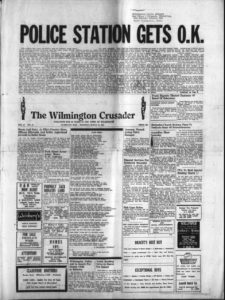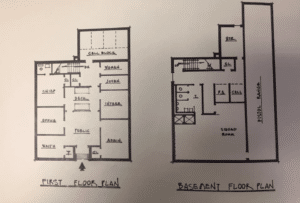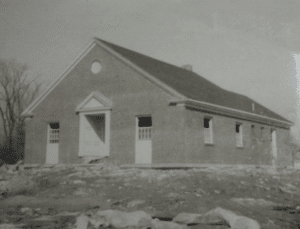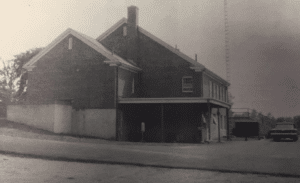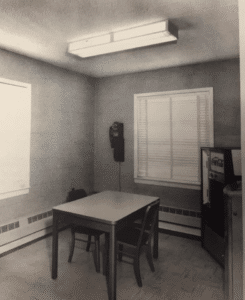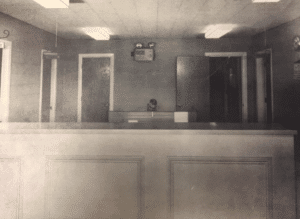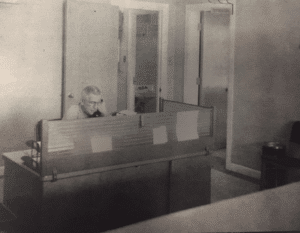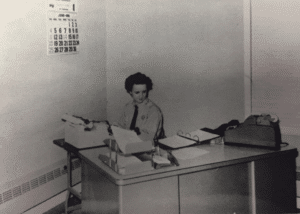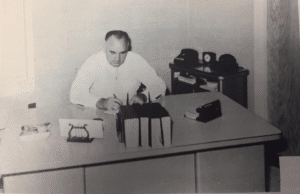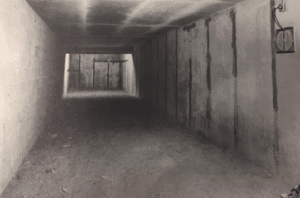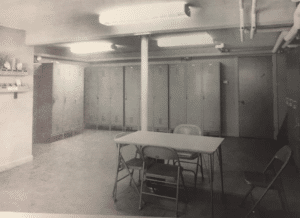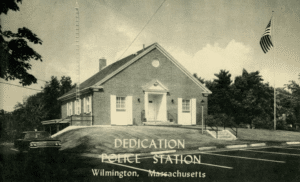
On Wednesday, March 12, 1958, the Wilmington Crusader proclaimed across its front page in a bold headline “Police Station Gets O.K.” It was the culmination of many years of work by Police Chief Paul Lynch to obtain adequate headquarters for the police department. The previous quarters on Church Street, shared with the Wilmington Fire Department proved to be poorly planned and inadequate for the needs of the department, actually the needs of either department. The police department was growing rapidly trying to keep up with the burgeoning population of the town. Vacating Church Street for quarters of their own seemed the only viable solution for both departments and that came in the form of approval for a new facility by the townspeople at the 1958 Annual Town Meeting.
Not since the hiring of its first police officer nor through previous several decades since the hiring of its first police chief had the Wilmington Police Department had a purpose-built, town-owned facility dedicated for use and occupation by the police department alone. In the late 1950s that all changed. The growing needs of a growing town dictated that the infrastructure be grown and improved as well. The highway department garage on Adelaide Street had reached its lifespan and a more adequate facility was needed. When a new facility on Andover Street opened, the former garage on Adelaide Street was demolished. Ironically, extra space in that building had served as the town’s police station and lockup during the 1920s and 1930s. The new police station would be built upon the land formerly occupied by the highway department garage.
The colonial-style, red brick building would be state of the art and feature all of the amenities of any modern police station. Its cost in 1960 dollars was a whopping $75,000.00 but it would be, upon its opening, the envy of neighboring cities and towns. There was no other nearby municipality that could boast of such modern convenience for their police officers. Built to house the police department exclusively, it incorporated a design based upon that idea. The design was also strategic in that it was meant to house the police department adequately for many years to come. Construction began and continued throughout 1959 and 1960 it was formally opened and dedicated in 1961.
The station was set back slightly from Adelaide Street allowing for a front lawn and landscaping along with adequate curbside parking for visitors and those conducting police business. Just inside the center entrance was the public reception area which featured an adjoining public waiting room and public bathroom facilities. Behind the wall-to-wall front counter was the front desk of the station duty officer. Off either side of the front desk area was the chief’s office, the administrative office, a general office and report writing room, the interrogation room and non-public bathroom facilities and storage closets. Behind the front desk through small corridor was the cellblock. This lockup facility had for cells for male prisoners each equipped with a sink, toilet and bunk. There was also a separate, similarly equipped cell each for female and juvenile detainees. Leading down from the cellblock were the stairs to the basement level. On the lower level was the squad room, locker, bathroom and shower facilities, the firearms room, the boiler room, a storage closet and extra cell facilities. Separate from the main basement floor plan and accessed through an entrance in the squad room was the pistol range. The pistol range was a three-bay range constructed entirely of foot thick, steel-reinforced concrete walls and the angled backstop downrange was ¾ inch thick steel plate. The finished walls and ceiling featured sound reducing covering and a powerful ventilation fan exhausted fumes to the outside of the building. The attic space above the main floor, accessed through a pull-down staircase in the cellblock, was used to store department records and files.
The building served adequately for nearly two decades but as the 1980s began, changes, expansions and improvements were much needed. The original female cell became the new booking room (prisoners were no longer brought through the main entrance to the front desk). The juvenile cell now doubled as a female/juvenile cell. The public waiting room was eliminated, and the general office space expanded. The interrogation room was eliminated and turned into additional office space. On the lower level the extra cell became a photography darkroom, and the squad room was reduced in size, donating space to a newly constructed detectives’ room. Further squad room space was relegated to a new evidence room. An outside carport at the rear of the building was enclosed and finished as office space for the juvenile and safety officers.
In the 1990s even greater changes occurred. The detectives, safety and juvenile officers moved to the second floor of the quasi-vacant Swain School on Middlesex Avenue. The chief’s office was moved from the main floor to the former safety/juvenile office. The station officer and dispatchers were moved into a side office while the front counter and front desk area was completely walled off from the front entrance, becoming a records storage and computer server room. The pistol range was also closed due to decades of lead contamination. The area was cleaned and contaminates removed and it was turned into a small gym and workout room equipped with cardio and strength training machines along with free weights and weightlifting equipment. The end of the 1990s however, saw the station reach the end of its practicality. The town and department and its officers had squeezed the last drop of space and usefulness out of the building. As ground was broken for the new combined public safety building next door at the site of the former Walker School, officers began working towards another move to another police station. During the summer of 2001, the Wilmington Police Department and the Wilmington Fire Department began taking occupancy of the new Wilmington Memorial Public Safety Building. When the move was completed, the wrecking ball reduced the town’s first true police station to a pile of rubble.
